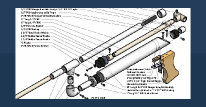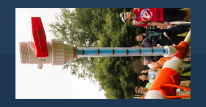Switch Resistor
(-)-----------| |--------{_}-----------(-)
Battery LED
(+)-------------------------------------(+)
This is the correct way to wire it, right?
Yes that is correct.
No its not correct. the resistor should be on the positive side to limit the power that is being delivered to the LED. on the negative side it does nothing except slow the amount of current that leaves the LED increasing its ability to burst into flames.
Also the switch being on the negative side also will only hinder the removing power from the LED. switch all that shit around.
No.
It doesn't matter where the resistor is, as long as it's in there. It doesn't need to be before the LED, it doesn't have to be after. The resistor doesn't "slow" current leaving the LED if it's behind it, it "slows" the whole damn thing.
Noodle, it doesn't matter what you cut or what color it is, so long as the +/- terminals of the LED are correct with the battery. Make it looks like this, as was posted earlier:
Switch Resistor
(-)-----------| |--------{_}-----------(-)
Battery LED
(+)-------------------------------------(+)If your switch has more than 2 prongs, you didn't get the right one.
Edit: fixed spacing on the code thing
Edited by Hipponater, 08 September 2009 - 12:24 AM.



















